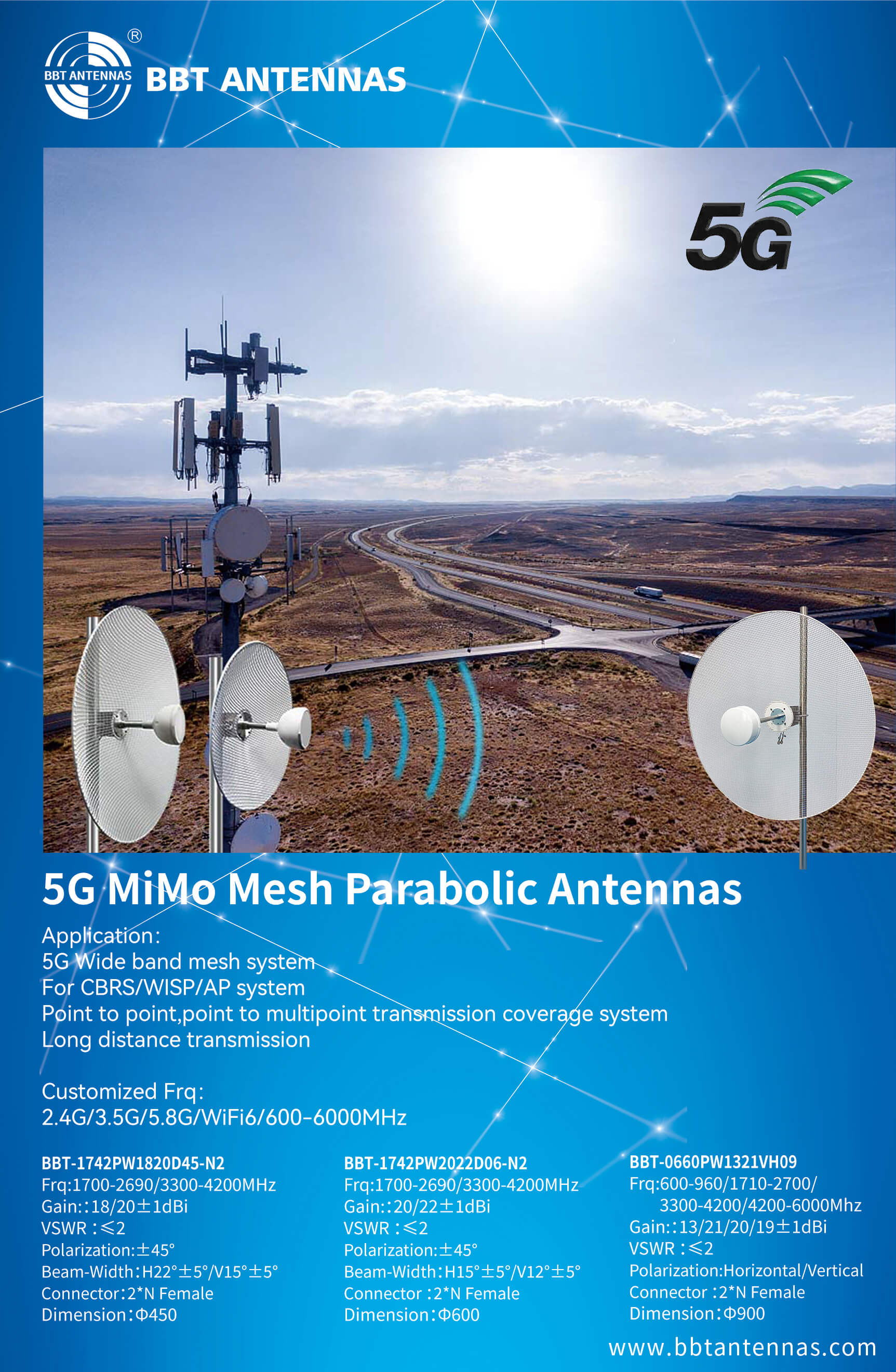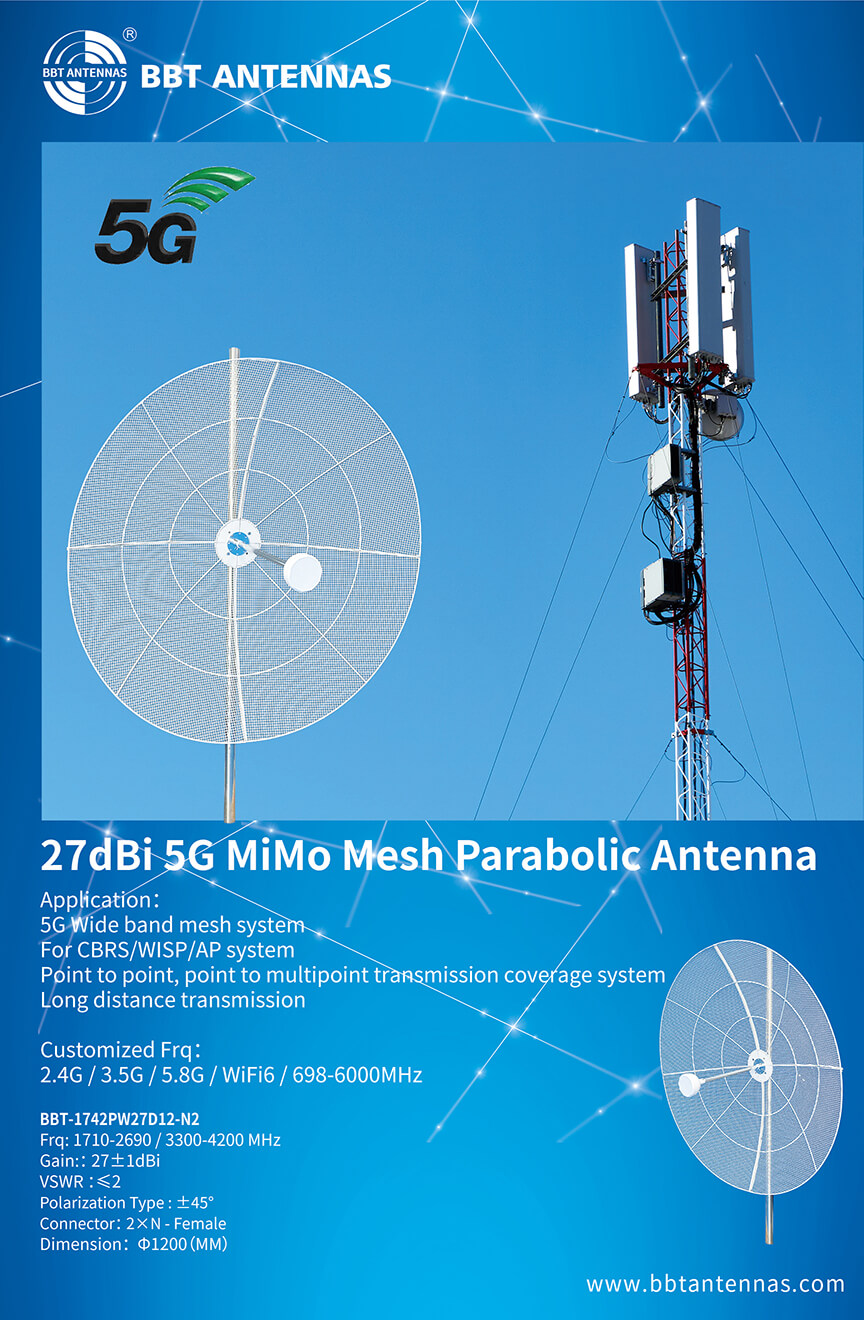Network dish antennas are pivotal in modern communication technologies, known for their high gain and directivity. Unlike satellite antennas, network dish antennas are primarily utilized for point-to-point communication and data transmission across various industries and applications. This article explores the top five applications of network dish antennas, showcasing their importance in enhancing communication efficiency and stability.
1. Point-to-Point Communication
One of the most significant applications of network dish antennas is in point-to-point communication. They enable direct wireless connections between two fixed locations, widely used in enterprise networks and remote working environments.
High Gain Characteristics: The design of network dish antennas allows them to concentrate signal energy into a narrow beam, facilitating efficient communication over long distances. This high gain enables data transmission over ranges from several kilometers to tens of kilometers, catering to diverse business needs.
Reduced Interference: Due to their highly directional nature, network dish antennas effectively minimize interference from other wireless sources. This is particularly crucial in urban environments, where signal interference can impact the stability and speed of data transmission.
Cost-Effectiveness: Using network dish antennas for point-to-point communication can significantly reduce costs compared to traditional wired connections. In many cases, laying fiber optics or cables is not only expensive but also impractical in certain areas.
2. Wireless Internet Services
As the demand for internet connectivity continues to rise, network dish antennas play a vital role in providing wireless internet services.
Remote Connectivity: Network dish antennas can deliver high-speed internet connectivity in remote areas that often lack traditional broadband infrastructure. By establishing wireless backhaul links, they can extend internet services to a broader user base.
Flexible Deployment: These antennas can be flexibly installed on rooftops or other elevated structures to ensure optimal signal transmission. This adaptability allows service providers to quickly respond to market demands and expand service coverage.
High Data Transfer Rates: Network dish antennas support data transfer rates reaching thousands of megabits per second, meeting the modern user's need for fast internet. This makes them particularly suitable for video streaming, online gaming, and other bandwidth-intensive applications.
3. Wireless Backhaul Networks
In mobile communications and internet service provision, network dish antennas are extensively used in wireless backhaul networks.
- Connecting Base Stations to Core Networks: Network dish antennas effectively link remote base stations to core networks, ensuring seamless connectivity for mobile users. This is crucial for enhancing overall network performance.
- Support for Multiple Frequency Bands: These antennas can operate across various frequency bands, including 2.4 GHz and 5 GHz, allowing them to adapt to different operational requirements and regulatory standards.
- Scalability: Network dish antennas facilitate the scalability of wireless networks by enabling easy addition of new base stations without significant infrastructure changes. This flexibility is essential for accommodating growing user demands.
4. Security and Surveillance Systems
Network dish antennas are increasingly utilized in security and surveillance systems due to their ability to provide reliable long-range connectivity.
Remote Monitoring: These antennas enable the transmission of video feeds from remote security cameras back to monitoring stations. Their high gain allows for clear image quality over long distances, making them ideal for securing large properties or critical infrastructure.
Integration with IoT Devices: Network dish antennas can be integrated with Internet of Things (IoT) devices used in security systems. This integration allows for real-time data transmission and monitoring, enhancing the overall effectiveness of security measures.
Cost Savings on Infrastructure: By utilizing network dish antennas instead of wired connections for surveillance systems, organizations can save on installation costs and reduce the time required for setup, especially in challenging environments where cabling may be difficult or impossible.
5. Smart City Infrastructure
Network dish antennas are integral to smart city initiatives that leverage technology to improve urban living conditions and enhance public services.
- Data Collection and Transmission: These antennas facilitate the collection and transmission of data from various sensors deployed throughout the city. For instance, they can connect traffic cameras, environmental sensors, and public safety systems to central management platforms.
- Enhanced Connectivity: In smart cities, reliable connectivity is crucial for integrating various systems such as transportation management, waste management, and energy distribution. Network dish antennas ensure that these systems communicate effectively with each other.
- Real-Time Monitoring: The high data transfer rates supported by network dish antennas enable real-time monitoring of city infrastructure. This capability allows city planners and administrators to make informed decisions based on current data trends.
Enhancing Communication Solutions with BBT ANTENNAS
As we explore the diverse applications of network dish antennas, it's essential to highlight how BBT ANTENNAS is at the forefront of innovation in this field. Our company specializes in developing advanced antenna solutions that cater to a wide range of industries.
With a focus on quality and performance, BBT ANTENNAS designs network dish antennas that not only meet but exceed industry standards. Our products are engineered for optimal gain and directivity, ensuring that clients benefit from reliable communication links whether they are operating in urban environments or remote locations.
By choosing BBT ANTENNAS as your partner in communication technology, you are investing in a future where connectivity is seamless and efficient.
Conclusion
Network dish antennas are indispensable tools that facilitate effective communication across various sectors, including telecommunications, smart city infrastructure, and remote surveillance systems. Their high gain, directivity, and adaptability make them crucial components in modern communication systems. As technology continues to advance, the applications of these antennas will likely expand further, reinforcing their importance in our increasingly interconnected world.


